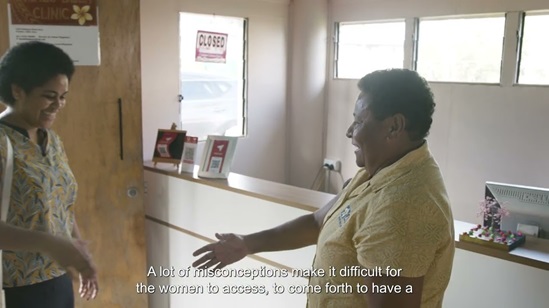Nurse conducting cervical cancer screening among women in health facilities at Presint 18 Health Clinic, Putrajaya, Malaysia.
Cervical cancer
No woman should die from cervical cancer, a preventable and curable disease. Almost all cervical cancer cases are linked to infection with high-risk human papillomavirus (HPV). Although most infections with HPV resolve spontaneously and cause no symptoms, persistent infection can cause cervical cancer in women.
In the Western Pacific Region, an estimated 145 700 women were diagnosed with cervical cancer in 2020, and 74 900 died from the largely preventable disease. HPV vaccination and screening and treatment of precancerous lesions are cost-effective ways to prevent cervical cancer. The HPV vaccine is most effective when it is given to girls below age 15, and all women should be screened for cervical at age 35 and again at age 45.
Few diseases reflect global health inequities as much as cervical cancer. The majority of cervical cancer deaths take place in low- and middle-income countries. This is also where the burden of cervical cancer is greatest. Access to public health services is limited, and screening and treatment for the disease have not been widely implemented.
In 2020, the World Health Assembly adopted the Global Strategy to Accelerate the Elimination of Cervical Cancer as a Public Health Problem, which recommends a comprehensive approach to cervical cancer prevention and control. To be on the path to cervical cancer elimination, countries must achieve the following targets by 2030:
- 90% of girls fully vaccinated with the HPV vaccine by age 15
- 70% of women screened by the age of 35 and again by age 45
- 90% of women diagnosed with cervical cancer are treated.
WHO developed a new Regional Strategic Framework for the Comprehensive Prevention and Control of Cervical Cancer in the Western Pacific after thorough consultation with Member States, experts and stakeholders. The framework guides Member States to develop policies, implement programmes and shape advocacy for the elimination of cervical cancer in the Region. The needed actions include:
- Step up vaccination – Work to make vaccines more affordable and accessible, and integrate HPV vaccines into national vaccination programmes.
- Increase screening coverage – Strengthen the capacity of human resources for health and include cervical cancer screening and treatment of precancerous lesions into local, regional and national and cancer control plans.
- Timely and quality treatment – Set management guidelines for all stages of cervical cancer, ensure access to treatment and provide referral pathways for higher-level care, including setting up subregional hubs.









